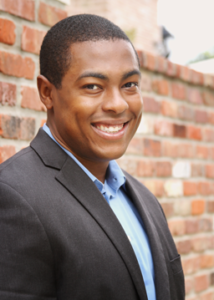
“The More We Know”: A Trauma Protocol for Crisis Day One
We can define the syllabus with precision, but our best-laid plans are subject to the moments when life simply happens. Questions arise. Frustrations are felt. And the sages on the stage better have something to show for all their high-falutin’ learning.
At least this is how I feel when teaching in the midst of traumatic events. I can usually triage the syllabus—shuffling assignments around to give space to the moment. I even know well enough to leave room for the inevitable crisis within my course planning. But what do you actually do when you’re in front of students who have come to class just as raw as you?
There’s no media bulletin that will solve the problem. Trauma doesn’t care about public relations. There’s no master lecture that will bring a master solution. Trauma doesn’t leave room for satisfying answers. But I’m here to tell you that all is not lost.
Every Christmas break, I go home to Houston. My most recent trip was the first time I had been since Hurricane Harvey. And in the days following my return to Pennsylvania, friends wanted to know what I saw. I didn’t have much to respond with except for the watchwords of the human story. We rebuild. We heal. We grow. We learn.
This is what we do in the face of natural disaster. It too is what we can do in the face of psychosocial trauma. But it’s going to take some time.
Unfortunately, I have found myself in the position of consulting a number of institutions enduring the perpetration of prejudicial affronts, most frequently concerning rampant sexism, homophobia, and racism. The biggest mistake I see is the grab for a big fix or antidote to make the situation go away. I have to explain that trauma is an immediate crisis that takes hold of us for the long haul, so our job is to equip our communities to rebuild, heal, grow, and learn as best as we can manage, moment by moment, day by day.
For teachers, this means reminding ourselves and our students that the more we know, the better we can manage the crisis before us. When life happens, I tell myself to adhere to the following protocol step by step.
Gather your composure. Find your footing even in the midst of your insecurity. Claim your own humanity—the right to feel, the right to hurt, the right to grieve. Eat nutrient-rich foods. Drink plenty of water. Meditate, do jumping jacks, practice yoga, or walk around the block. Your first step is to regain your sense of self.
Reconnect. Take a moment to let a trusted colleague or companion know that you’re about to go into the fray. You have a community. A simple text message or phone call can remind you that you’re not alone.
Lower the bar. When it’s go time, your job today is to “be you” and “do you” with the students. This will equip them with the confidence to do the same. Before you know it, you will fall back into the role of teacher. They will fall back into the role of student. And you’ll together develop a new stasis.
Preach what you have practiced. Have your students take a few minutes to do a version of what you have just done. Lead them in a moment of silence or even a quick stretch-break. Let people grab a drink of water and return to class. Let them check in with each other as they trickle back into the room. Your acknowledgment of their humanity will go a long way in garnering the trust you’ll need for the day.
Teach the moment. Present what you understand about the situation and contextualize it in light of what you know as teacher-scholar. Then take a few moments to show how you’re learning. In so doing, you’ll remind students that they are not the sum of their emotions. They are also learners with skills and proficiencies to help them grapple with the day beyond what they could have done prior to class. It also solidifies a basis for community-building amidst the new state of affairs.
From here, you have a “we” with which to work. Come together around a whiteboard and make a list of questions that you all want to pursue as a class. Name the resources you might consult in the coming days in your search for more information. Excavate your syllabus to see not whether there’s anything of use, but what can be used in the moments ahead. Better questions lead to better possibilities.
The work you have put in—together— will bear fruit in the days to come. I know now what else to ask for in the midst of trauma. But until then, use the learning process as a vehicle to position yourselves in renewed strength and community.
Leave a Reply